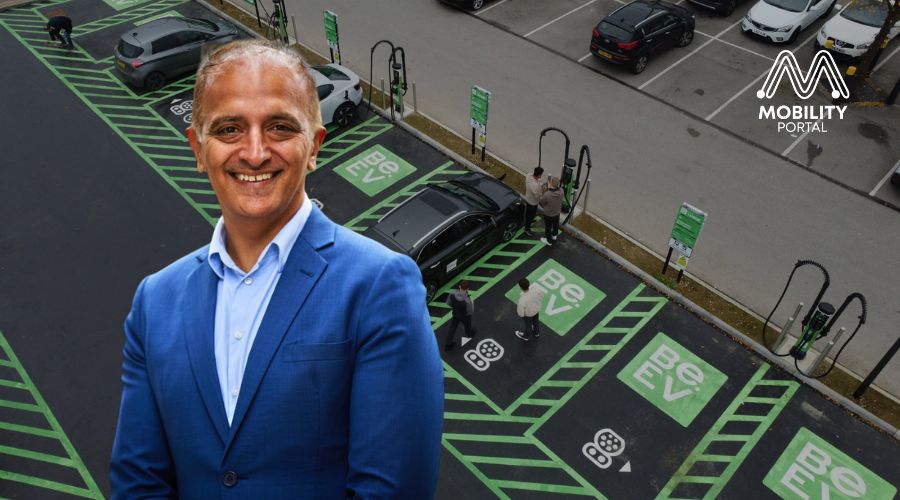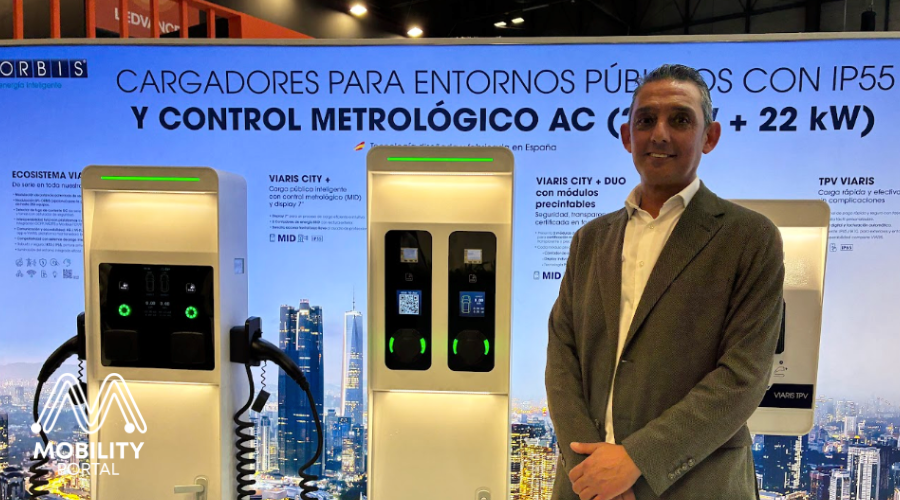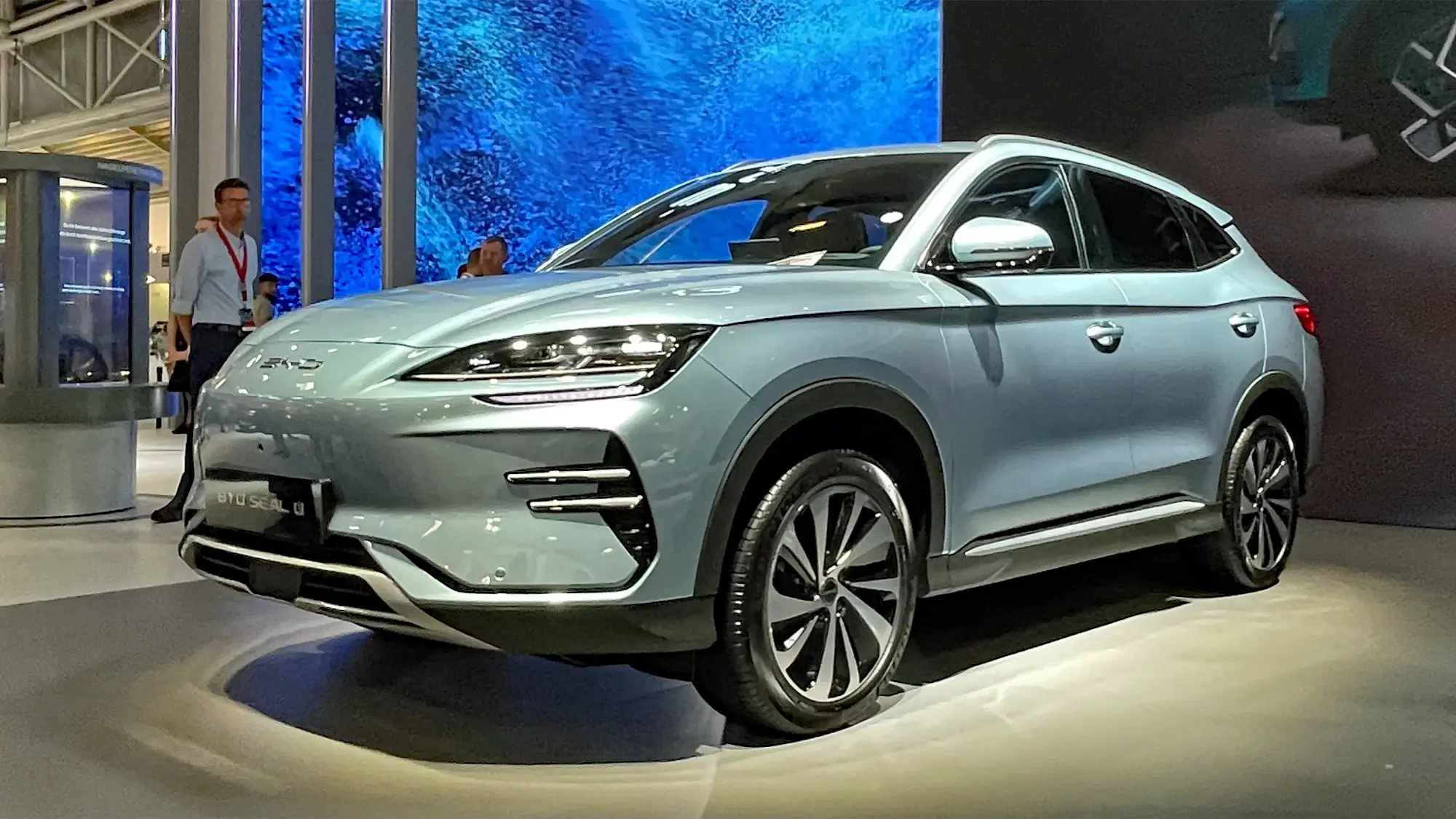Be.EV already operates just over 800 electric vehicle (EV) charging points and expects to close the year with around 200 more.
“There will be a significant rollout in the final quarter. We also expect to add between 200 and 400 more next year,” reveals Asif Ghafoor, CEO of the company, in conversation with Mobility Portal.
The strategy prioritises service quality and user choice over simply counting units.
“Our goal is to create a company that customers actively choose as a place they want to go to charge,” Ghafoor states.
That’s why Be.EV is “quite selective” with its locations: the company aims to avoid overbuilding and focuses instead on sites with proven demand, a return on investment, and a good user experience.
So, which kinds of sites are they focusing on?
“Like Wi-Fi in hotels”: charging as a retail standard
An example of this vision is the project at Parkway Central Retail Park, where the company transformed a neglected corner into a flagship ultra-rapid charging hub.
For Ghafoor, the analogy is clear: “Initially, most hotels didn’t have Wi-Fi, and those that did often charged for it. Over time, it became standard. Today, if you go to a hotel and there’s no Wi-Fi, you won’t stay. Charging is heading the same way.”
In practice, retail parks are already attracting new customers and increasing visit frequency.
“It’s a continuation of a long-standing behaviour in the United Kingdom (UK): charging while you do your shopping,” he notes.
Moreover, due to their location along high-traffic corridors, these hubs attract passing drivers who prefer a modern environment — shops, food courts, cafés, and toilets — over the traditional service station experience.
“In ten years, shopping centres will have charging as hotels have Wi-Fi today,” he predicts.
Upcoming locations
According to the CEO, the development cycle in the UK takes around two years from start to service, so the “next wave” is already underway.
“We had a large batch of sites in the North East of England, working with the Duke of Northumberland on some of his properties,” he says.
“Some of those sites are about to go live,” he adds.
Meanwhile, Be.EV has launched its first hub in London and expects to open another in the south of the city in the spring.
The roadmap also includes a large shopping centre near Bristol, with high footfall thanks to its cinema and dining options.
Why does Be.EV avoid public tenders?
Be.EV made the decision not to compete in public tenders.
“The process became slow and cumbersome. Plus, they often look to install lots of slow chargers,” Ghafoor explains.
Instead, the company signs agreements with retail parks for destination charging and with fast food and coffee chains for rapid en-route charging.
On top of that, it is developing “flagship sites” — like the Charging Oasis in Manchester — which serve as reference hubs offering high power, easy access, and complementary services.
The three major challenges for EV charging in the UK
First, Ghafoor acknowledges that “today, the experience is inconsistent and not always good.”
“Until we reach a point where the experience is excellent and frictionless, we’ve still got a long way to go,” he admits.
The issue, he says, is that the sector has been “obsessed with counting chargers and connections”, but as mass adoption arrives, the bar is raised: what matters now is consistent service quality.
Secondly, the CEO suggests a need to educate the mass consumer: “To teach them to think in kilowatts rather than litres” and to clarify “pricing by power or time of day.”
Lastly, he highlights the role of the authorities.
“The UK government has done a lot, but there are still basic issues, like signage,” he points out.
“Visibility of charging points is crucial,” he adds.
With 12 million EVs forecast in the medium term, “there won’t be enough space” if everything is concentrated in service areas.
The solution lies in clearly signposting immediate alternatives:
“At every junction there’s a Starbucks or a KFC with chargers; it should say ‘EV charging at next junction’ if it’s just 1–4 minutes away.”
DISCOVER MOBILITY PORTAL DATA
Introducing Mobility Portal Data, a new exclusive market intelligence platform offering reliable data and key insights for smart decision-making in the automotive sector—covering both internal combustion and electric vehicles, as well as charging infrastructure.
Research, trend analysis, and clearly organised statistics—all in one place.
With Mobility Portal Data, better decisions are just a click away.
READ MORE
-
Connectivity, DC and high power: ORBIS’ three technology bets for eMobility charging in 2026
ORBIS is heading into 2026 with a clear technological focus: stronger connectivity, further development of its DC solutions and a decisive push towards high-power charging. The Spanish manufacturer is fine-tuning its portfolio to align with the evolving European regulatory framework, while introducing its new Viaris ISI charger.
-
The charger’s ‘face’: why the HMI decides the success—or failure—of public chargers
Touchscreens at charge points act as the human–machine interface (HMI). If the interface fails, so does the charger. How can we ensure an optimal customer experience?
-
EV panorama in Europe: electric cars pass the 20% mark as BYD steps up its EU push
Europe’s electric vehicle market continues to gain ground: battery-electric cars exceed a 20% monthly share in November, BYD triples its registrations, and Tesla extends its loss of momentum, according to the latest data from ACEA.











